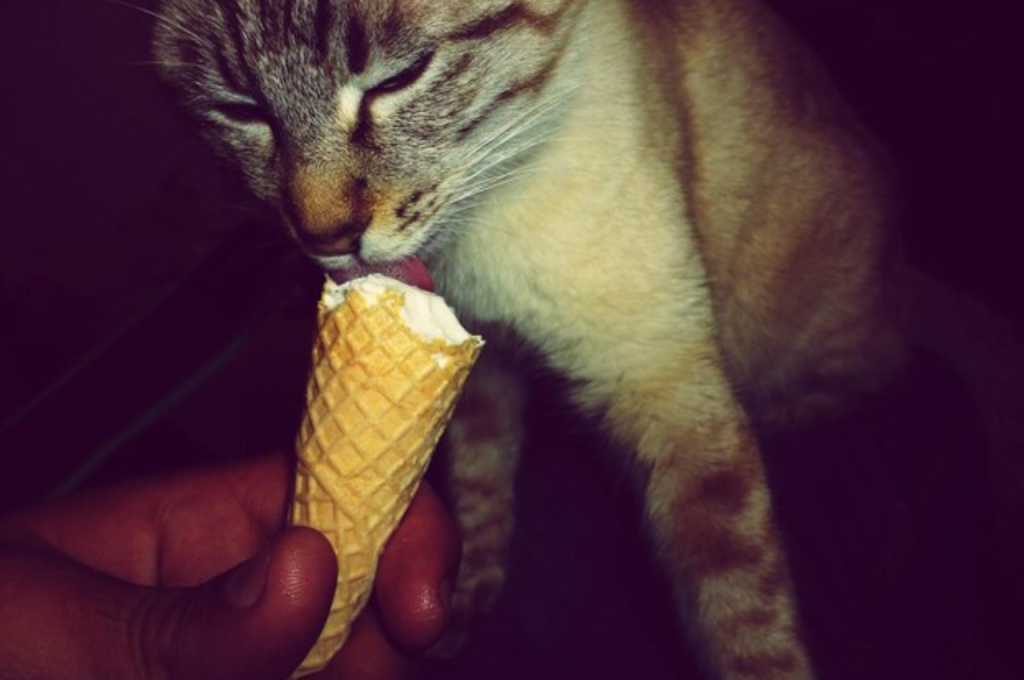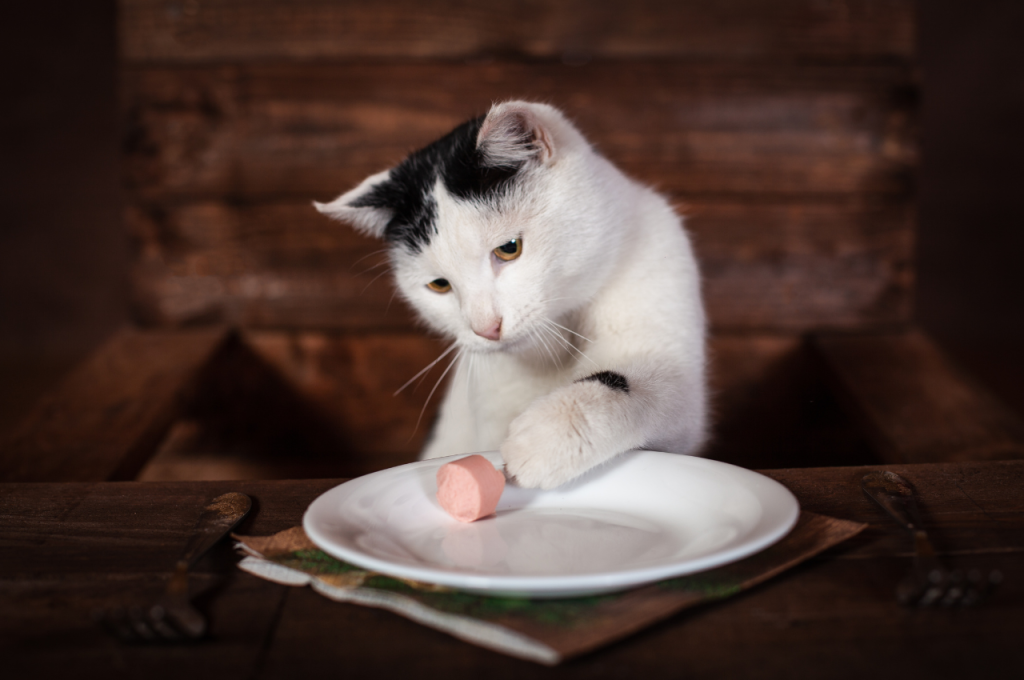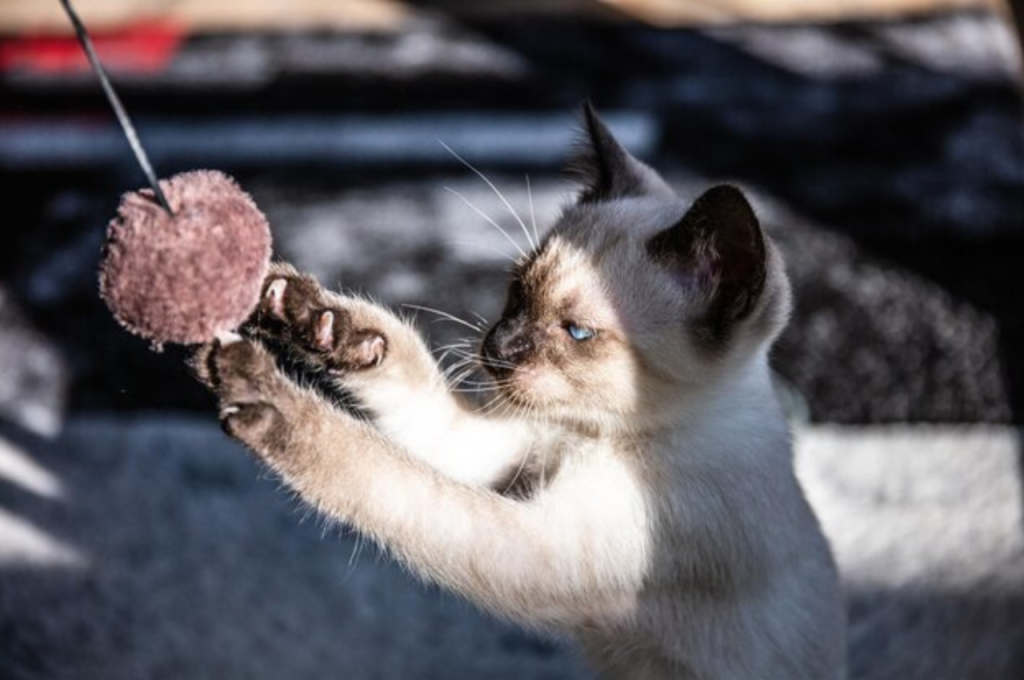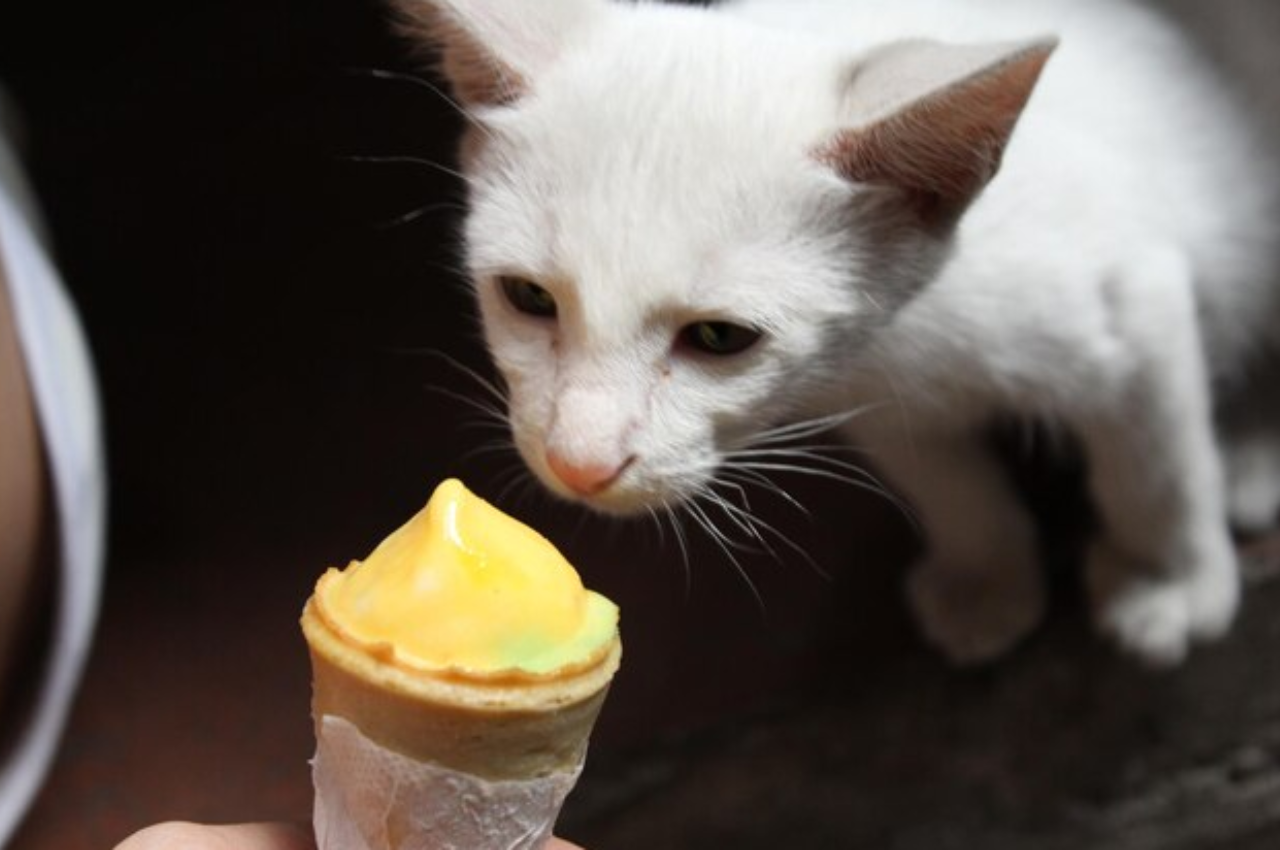Cats should not eat ice cream as it can cause digestive issues due to lactose intolerance. While some cats may enjoy the taste, it is best to avoid feeding them this treat.
Cats lack the necessary enzymes to properly digest dairy products, leading to stomach upset and potential diarrhea. Instead, opt for cat-safe alternatives to provide your feline friend with a tasty and safe snack. Always prioritize your cat’s health and well-being when choosing their diet.
Remember, a happy and healthy cat is a well-fed cat.
The Dangers of Ice Cream for Cats
Ice cream is a delicious treat enjoyed by many, but when it comes to sharing it with your feline friend, caution is essential. While it may seem harmless to offer your cat a taste of this creamy dessert, there are significant risks involved.

Toxic Ingredients in Ice Cream
Some ingredients commonly found in ice cream can be toxic to cats. Chocolate, xylitol, and high sugar content can be toxic to cats when eaten in ice cream and should be avoided at all costs.
Potential Health Risks
Consuming ice cream can lead to digestive issues, obesity, and even pancreatitis in cats.
Understanding Cat’s Digestive System
Cats have a sensitive digestive system that can be easily upset by certain foods. Ice cream should be avoided as it contains lactose, which many cats are intolerant to. Feeding them ice cream can lead to digestive issues like diarrhea and stomach discomfort.
It’s best to stick to cat-friendly treats to keep their digestive system healthy.
When it comes to considering what treats are safe for our feline friends, it’s important to understand their digestive system. Cats have specific limitations when it comes to digesting certain foods, including dairy products like ice cream. By understanding these limitations, we can make informed choices about what we feed our beloved cats.
Limitations of Cat’s Digestive System
To understand why cats shouldn’t eat ice cream, it’s crucial to be aware of their digestive system’s limitations. Cats are obligate carnivores, which means their bodies are designed to primarily digest and derive nutrients from animal protein. Unlike humans, who have enzymes that help break down lactose (the sugar found in milk), cats lack sufficient levels of the enzyme lactase, which is crucial for digesting lactose. As a result, feeding them dairy products can lead to uncomfortable and potentially harmful symptoms.
Furthermore, the digestive system of cats is short and simple compared to humans. This means that when cats consume something that their bodies struggle to digest, it can lead to gastrointestinal distress, such as diarrhea and vomiting. It’s important to prioritize their health and well-being by avoiding foods that can potentially harm their delicate digestive systems.
Lactose Intolerance in Cats
Lactose intolerance is a common issue among many cats. This means that when they consume dairy products, such as ice cream, it can result in digestive upset. Symptoms of lactose intolerance in cats include gas, bloating, diarrhea, and stomach discomfort. Just like in humans, lactose intolerance in cats can vary in severity. While some cats may only experience mild discomfort, others can suffer from severe gastrointestinal issues.
In addition to lactose intolerance, ice cream often contains other ingredients that are not suitable for cats. These include sugars, artificial flavors, and potential allergens, which can further exacerbate digestive problems and may even cause allergic reactions. It is always essential to consult with a veterinarian before introducing any new food to your cat’s diet.
Safe Alternatives to Ice Cream
Cats enjoy the occasional treat just like humans, but not all human foods are safe for feline consumption. While ice cream might seem like a tempting option to share with your furry friend, it can be harmful to cats due to its dairy content and high sugar levels. Fortunately, there are plenty of safe and enjoyable alternatives that you can offer your feline companion.
Cat-friendly Treats
When it comes to finding safe and healthy treats for your cat, it’s important to opt for options that are specifically formulated for feline consumption. Look for treats that are low in sugar and do not contain any harmful ingredients, such as chocolate or xylitol. Some popular cat-friendly treats include:
- Freeze-dried meat or fish treats.
- Commercial cat treats are made with natural ingredients.
- Specialty cat yogurts are designed for feline dietary needs.
Homemade Frozen Treats for Cats
If you prefer to provide your cat with a homemade frozen treat, there are several safe and simple options that you can prepare. Consider making these cat-friendly frozen treats at home:
- Chicken or fish broth ice cubes.
- Frozen pureed pumpkin or tuna.
- Yogurt-based frozen treats are made specifically for cats.
Signs of Ice Cream Toxicity in Cats
Cats should not be given ice cream due to its potential toxicity. Signs of ice cream toxicity in cats include vomiting, diarrhea, and gastrointestinal distress. Cats lack the enzymes needed to digest dairy, leading to adverse reactions when they consume ice cream.

Signs of Ice Cream Toxicity in Cats Cats love to indulge in tasty treats, but it’s crucial to be aware of the signs of ice cream toxicity in cats. While it might seem harmless to offer your feline friend a lick of ice cream, it’s important to understand the potential risks and what to watch out for.
Symptoms to Watch Out for
Keep a close eye on your cat for any signs of ice cream toxicity, including vomiting, diarrhea, abdominal discomfort, lethargy, dehydration, and incoordination. If your cat displays any of these symptoms, it could indicate an adverse reaction to the ingredients in the ice cream.
Immediate Steps to Take
If you suspect that your cat has ingested toxic substances from ice cream, it’s crucial to take immediate action. Contact your veterinarian to seek professional advice and guidance. Additionally, ensure your cat has access to fresh water to stay hydrated and monitor their behavior closely for any changes. Ultimately, being aware of the signs of ice cream toxicity in cats is crucial to ensuring the well-being of your feline companion. If you do decide to treat your cat to a special snack, always opt for cat-friendly alternatives to avoid any potential health risks.
Managing Cat’s Sweet Cravings
While cats are known for their independent nature, they can also develop a liking for sweet treats, such as ice cream. However, it is important to note that cats have different taste preferences compared to humans. People often assume that since they enjoy sugary desserts, cats would too. But the truth is, cats are carnivores and their taste buds are wired differently. They cannot taste sweetness as they are missing the necessary taste receptors for it.
Why do cats crave sweet foods then?
Despite their inability to taste sweetness, cats can still develop cravings for sweet foods. This can be due to their innate curiosity and the novelty of new flavors. Additionally, cats have a strong sense of smell and the aroma of sweet foods might attract them. So, while they may show interest in sugary treats like ice cream, their preference is more likely driven by the creamy texture and enticing smell rather than the actual taste of sweetness.
When it comes to managing your cat’s sweet cravings, it is crucial to prioritize their overall health and provide them with a nutritionally balanced diet. Cats have specific dietary requirements that should be met to ensure their well-being. A diet rich in animal protein is essential for their optimal health. Feeding them a well-balanced cat food that fulfills their nutritional needs is the best approach.
Here are a few important points to keep in mind:
| Cats need a diet that is high in protein and low in carbohydrates. |
| Consult with your veterinarian to determine the appropriate portion sizes and feeding schedule. |
| Offer a variety of textures and flavors through different types of cat food that meet their nutritional requirements. |
| Avoid sharing human food, including ice cream, as it can be harmful to their health. |
Instead of giving your cat ice cream, there are safe and healthy alternatives that can satisfy their cravings for a cool treat. Consider providing them with frozen treats specifically made for cats. Some pet stores offer frozen cat treats made from ingredients that are safe for feline consumption. Alternatively, you can freeze some pureed fruits, like watermelon or mashed banana, in ice cube trays for a refreshing and cat-friendly snack.
While it may be tempting to share your favorite desserts with your furry friend, it’s important to prioritize their nutritional needs and avoid indulging them in foods that may have adverse effects on their health. Understanding your cat’s taste preferences and providing them with a balanced diet will go a long way in ensuring their well-being. By offering safe alternatives to ice cream, you can still treat your cat without compromising their health.
Introducing New Treats to Cats
Discover whether cats can safely indulge in the sweet treat of ice cream and explore new options to satisfy their taste buds without compromising their health.
Gradual Introduction Process
Cats can enjoy a variety of treats, just like us. When it comes to introducing new treats, take a slow and steady approach. Allow your feline friend to adjust gradually.
Monitoring Cat’s Reactions
- Pay close attention to your cat’s reaction when introducing new treats.
- Look for signs of allergic reactions or digestive issues.
Consulting A Veterinarian
When it comes to managing your cat’s sweet cravings or any dietary concerns, consulting a veterinarian is essential. They can assess your cat’s overall health, and discuss dietary recommendations.
Importance of Professional Advice
Consulting a veterinarian is crucial for addressing your cat’s dietary concerns and managing their sweet cravings effectively. Promoting their overall health and well-being.
Discussing Cat’s Dietary Needs
Understanding your cat’s dietary needs is crucial for their health and well-being. Consulting a veterinarian allows for personalized recommendations tailored to your cat’s requirements, ensuring they receive the best possible care.

Conclusion
Cats and ice cream may seem like a cute combination, but it’s important to remember that felines have different dietary needs. While an occasional lick of ice cream may not be harmful, it’s better to refrain from feeding it to your furry friend regularly.
Cats lack the enzyme to digest lactose, which can lead to digestive issues. Instead, stick to cat-friendly treats and consult with your vet to ensure your cat’s health and wellness.
